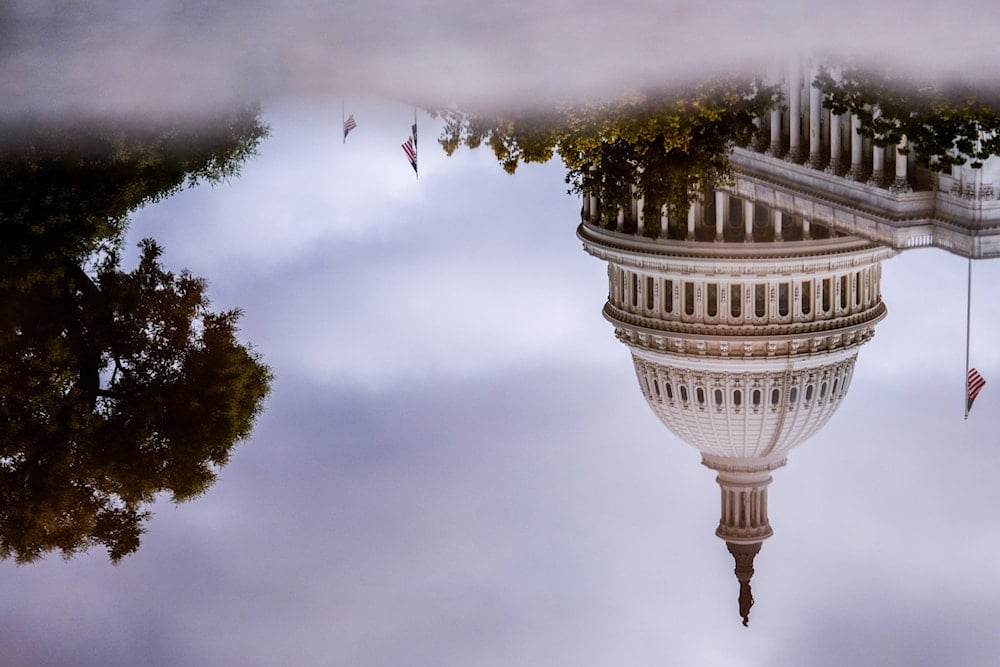Trump’s spending cuts meet resistance in Republican Party
As the deadline nears, US lawmakers are losing patience with the continued reliance on budget cuts to solve fiscal disputes.
-

The US Capitol is reflected in a puddle outside of the Rayburn House Office Building, on July 16, 2025, on Capitol Hill in Washington. (AP Photo/Julia Demaree Nikhinson)
US President Donald Trump is facing growing Republican resistance as his administration prepares to propose a second round of federal spending cuts, setting the stage for a contentious budget fight ahead of a critical September deadline.
In the US political system, Congress holds the power to allocate government spending through appropriations. However, presidents can submit "rescissions," formal requests to cancel previously approved funds. Though legal, this approach is rare and typically controversial, as it bypasses the standard legislative negotiation process.
Trump’s use of the rescissions process marks a departure from traditional budgetary practice, raising alarm even among members of his party.
The first rescissions package, approved recently, slashed $9 billion from various federal programs, including public broadcasting and global health initiatives. While it passed, it did so with clear reluctance from Republican lawmakers.
Now, with a second package on the horizon, key GOP figures are voicing concern. White House Budget Director Russ Vought confirmed the administration is preparing additional cuts, a move some Republicans say they may not support.
Factors fueling Republican resistance
Several factors are fueling Republican resistance. One of these factors is the lack of transparency, as lawmakers say they’ve received limited details about which programs will be cut and how deeply. Another is constitutional concerns with critics arguing that the president is encroaching on Congress’s constitutional authority to manage the US government budget.
There are also the political risks associated with approving Trump's federal spending cuts since voting for unpopular cuts could expose Republicans to electoral backlash, particularly in battleground districts.
The use of rescissions, while legal, is rare among democratic systems, where fiscal decisions typically go through negotiated legislative processes. Trump’s aggressive fiscal posture reflects broader trends in fiscal conservatism, but the execution has drawn criticism from both domestic and international observers.
What’s at stake ahead of the September deadline
The battle over spending comes ahead of the September 30 deadline for Congress to approve annual appropriations bills. Without an agreement, large parts of the federal government could shut down, a scenario with global economic consequences.
Senate Majority Leader John Thune signaled a preference to avoid additional rescissions and instead focus on the normal appropriations process, stating: "The goal right now is to get into the appropriations process."
Despite internal opposition, the Trump administration appears determined to push forward. That said, Representative Anna Paulina Luna described a "multi-step plan" that includes "massive rescissions" and future budget reduction strategies.
Moreover, the standoff reflects deeper divisions within the Republican Party between hardline fiscal conservatives and institutionalists who prefer traditional legislative channels. While Trump remains a dominant figure within the GOP, his approach to the US government budget is now revealing fractures that could complicate Republican unity heading into an election cycle.
As one Republican senator warned, the administration's methods could undermine the bipartisan cooperation needed to maintain basic government functions, a concern with implications not just for the United States but also for its global partners as well.

 3 Min Read
3 Min Read










